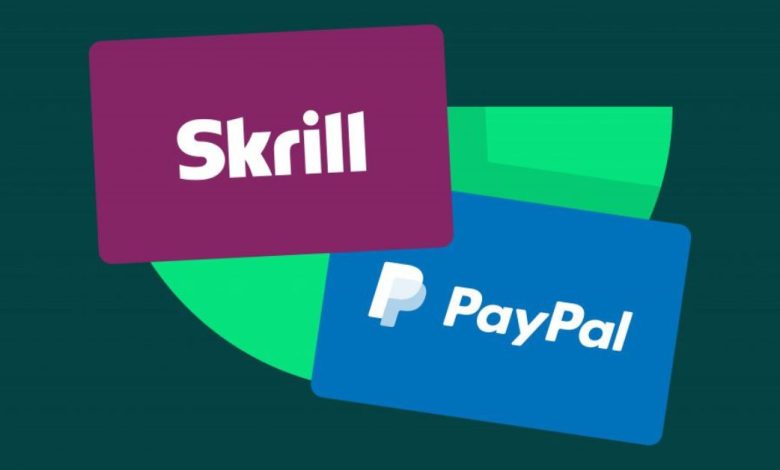Skrill vs. PayPal: Unraveling the Differences

In the ever-evolving landscape of online payment systems, two giants have held their ground for quite some time: Skrill and PayPal. These platforms facilitate the ease of electronic transactions and have carved a niche for themselves in the realm of digital finance. However, they are not identical. In this blog post, we’ll dive deep into the differences between Skrill and PayPal, uncovering their unique features, strengths, and weaknesses, to help you make an informed choice about which one best suits your financial needs.
The Basics: What Are Skrill and PayPal?
Before we embark on the Skrill vs. PayPal debate, let’s start with the basics.
Skrill:
Formerly known as Moneybookers, Skrill is a digital wallet that allows users to make payments and money transfers over the internet. Founded in 2001, Skrill is owned by the PaySafe Group, a global payment company. It has become a popular choice for online gambling, trading, and e-commerce.
PayPal:
PayPal is a global online payment system that started its journey back in 1998. It enables individuals and businesses to send and receive payments electronically. Acquired by eBay in 2002 and later spun off, PayPal is now an independent company that remains one of the most recognized online payment solutions worldwide.
Now that we have a brief introduction let’s dissect the pros and cons of each to understand the distinctions.
Skrill
Pros:
1. Widely Accepted in the Gambling and Forex Industry: Skrill is a preferred choice in industries like online gambling and forex trading. Many websites such as 22Bet Kenya accepts Skrill payments, making it a top choice for those who engage in these activities.
2. Lower Fees for Some Transactions: Skrill can be more cost-effective for certain international money transfers. If you’re sending money abroad, especially to a Skrill wallet holder, you might find the fees lower compared to PayPal or traditional banks.
3. Privacy and Anonymity: Skrill offers a degree of privacy and anonymity. If you value discretion in your online transactions, Skrill may be more aligned with your preferences.
4. Prepaid Mastercard: Skrill provides users with a prepaid Mastercard, allowing you to access your Skrill balance via ATM withdrawals or for making payments where Mastercard is accepted.
Cons:
1. Not as Widely Accepted as PayPal: Skrill is not as universally accepted as PayPal, especially for everyday online shopping or services like freelance platforms. You may encounter fewer opportunities to use Skrill for standard transactions.
2. Transaction Fees: While Skrill may offer lower fees for some international transactions, it is known for having higher fees for certain services, such as currency conversion.
3. Inactive Account Fees: Skrill imposes an inactivity fee if you don’t log into your account or make a transaction for 12 months. This could catch you by surprise if you’re not a frequent user.
4. Limited Customer Support: Skrill’s customer support is sometimes criticized for being less responsive and helpful compared to PayPal.
PayPal
Pros:
1. Widely Accepted Worldwide: PayPal is a global giant when it comes to online payments. It is accepted by a vast number of online retailers, freelancing platforms, and service providers. This ubiquity makes it an excellent choice for everyday online transactions.
2. User-Friendly Interface: PayPal is known for its intuitive and user-friendly interface. Setting up an account and navigating the platform is straightforward, which appeals to both tech-savvy and less tech-inclined users.
3. Strong Buyer and Seller Protection: PayPal offers robust buyer and seller protection policies, which can help resolve disputes and provide security for online transactions. This is particularly valuable when shopping on platforms like eBay.
4. Multi-Currency Support: PayPal allows you to hold multiple currencies in your account, making it convenient for international transactions and avoiding high currency conversion fees.
Cons:
1. Transaction Fees: PayPal’s fees can be relatively high, especially for international transactions and currency conversion. These costs can eat into your funds, particularly if you frequently engage in cross-border business.
2. Account Freezes and Holds: PayPal has been known to freeze accounts or put holds on funds in case of suspected fraudulent activity. This can be frustrating and inconvenient, even when legitimate.
3. Strict Compliance: PayPal’s stringent compliance rules can sometimes lead to account limitations or closures without much explanation.
4. Challenging for Smaller Businesses: Smaller businesses might find PayPal’s fee structure less favorable, impacting their profit margins.
The Verdict: Which One to Choose?
The choice between Skrill and PayPal ultimately depends on your specific needs and priorities. If you’re an active trader, gambler, or require a higher degree of privacy, Skrill might be the better fit. On the other hand, if you’re looking for a user-friendly, widely accepted platform for everyday online transactions with strong buyer and seller protection, PayPal is the clear choice.
In the Skrill vs. PayPal debate, both platforms have their strengths and drawbacks. Carefully assess your financial objectives and preferences to make the right selection. Remember that your choice can significantly impact your online financial experience.





